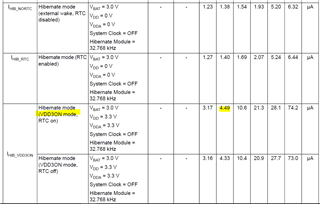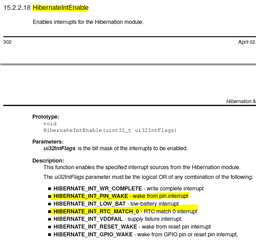Other Parts Discussed in Thread: TM4C123GH6PM
Hello
I’m trying to get hibernation working properly on the EK-TM4C123GXL eval board. I can successfully build and run the hibernation example in ‘C:\ti\TivaWare_C_Series-2.2.0.295\examples\boards\ek-tm4c123gxl\hibernate’, but the CPU still drains ~22mA while the example code is running.
I disabled the UART portion of the code and that dropped me down to ~5mA.
I enabled VDD3ON mode via HibernateGPIORetentionEnable( ) since the eval board doesn’t use the HIB pin to turn off the power to the VDD power pins while hibernating. According to the documentation, VDD3ON mode should internally remove power from everything except the GPIO pins and the hibernate module. Unfortunately it didn’t significantly reduce my ~5mA current drain.
Do you know why the board is drawing so much power? Can it only achieve the super low hibernation currents if I remove the voltage from the VDD pins?
Thank you
Scott Wild







